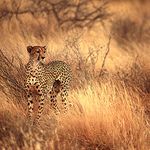Copy link to clipboard
Copied
Something that I am having trouble getting my head around. When exporting, some say that, if you do not click the Resize to Fit box, then the ppi setting has little or no effect on the exported file (kind of makes sense as the export process does not know what size print you want). But, I did a couple of tests where I exported the same photo using 3 different ppi settings (200, 300, 360). In each case, when I examine the jpg, in Windows, they all show as having dimensions of 5083 x 3389. But when I examine the actual file size, I see 21.2, 21.9 and 22.4 MB. To me, this just confuses the issue.
What I am looking for is the best values to use so that whatever size print I choose to have made will be the best.
Can someone please help me clear this up?
 1 Correct answer
1 Correct answer
One reason for seeing slightly different file size from selecting different PPI settings, other things being equal, may be if you have got output sharpening active. Specifically, if this output sharpening is set to either "gloss" or "matt" output.
A PPI setting denotes some sort of implied physical scale; and output sharpening with a print intent does take account of physical scale in its calculations (though it will not, AFAICT, with a "screen" intent... which seems to only pay attention to the
...Copy link to clipboard
Copied
There should be no effect at all. Three different ppi settings for the same photo should lead to three identical images.
Copy link to clipboard
Copied
Agreed, and yet.....
Copy link to clipboard
Copied
I find it curious that you are seeing any difference in size at all. I just exported a NEF file as a JPEG, full-sized, one at 72 PPI and one at 300 PPI, At 100% quality. Both copies exported at 11 MB. My experience with changing the PPI has always been that it has had absolutely no impact on the size of the image. For me, I have always found that regardless of what the PPI setting is, the file dimensions are always the same. In this instance, the dimensions are 6000 x 4000 pixels, and changing the PPI isn't going to change those dimensions at all. At least that's the way it has always worked for me.
Copy link to clipboard
Copied
Well, as I indicated, in my case, there are small differences. I cannot see why.
Copy link to clipboard
Copied
One reason for seeing slightly different file size from selecting different PPI settings, other things being equal, may be if you have got output sharpening active. Specifically, if this output sharpening is set to either "gloss" or "matt" output.
A PPI setting denotes some sort of implied physical scale; and output sharpening with a print intent does take account of physical scale in its calculations (though it will not, AFAICT, with a "screen" intent... which seems to only pay attention to the pixel resampling).
Copy link to clipboard
Copied
In all 3 cases, the only change, to the export dialogue, was the ppi.
To all. Thanks for the responses.
Copy link to clipboard
Copied
In all 3 cases, the only change, to the export dialogue, was the ppi.
Richard explained the likely cause -- you've got the export option Output Sharpening enabled for Glossy or Matte paper.
I just exported three JPEGs from the same photo with Sharpen For: Matte Paper and observed differing sizes for different PPIs:
PPI 200: 12.00 MB
PPI 300: 12.47 MB (4.0% bigger)
PPI 360: 12.61 MB (5.1% bigger)
The increases in size are comparable to what you observed.
I never knew of this behavior before! It throws another wrinkle in the the typical FAQ response that "PPI doesn't matter".
Copy link to clipboard
Copied
Thanks for the help.
Copy link to clipboard
Copied
Good catch on the different file sizes - I had missed that nuance. Regarding your question, "What I am looking for is the best values to use so that whatever size print I choose to have made will be the best", use the PPI that your printing service tells you to use; if you're printing yourself, use the native resolution of the printer (or save time by printing from Lightroom).
Copy link to clipboard
Copied
The design of the Output Sharpening in LR was outsourced to Pixel Genius, the creators of the excellent Photokit Sharpening plugin for Photoshop. With the plugin the user can optimize sharpening according to type (Capture, Creative, Output) and intended final usage. The version built in to LR does this automatically, taking its cues from display media and resolution (ppi), as noted above. According to Bruce Schewe, one of the designers, the same is true when the output media is electronic (screen) display. Since at the time of its design virtually all screens had a ppi in the 95 - 105 range, the sharpening is optimized for low resolution display when the ppi is set to 150 or less.
As others have written above, different sharpenings will affect image content - detail, noise, haloing and other artifacts - which can in turn affect jpg compression.
Find more inspiration, events, and resources on the new Adobe Community
Explore Now



